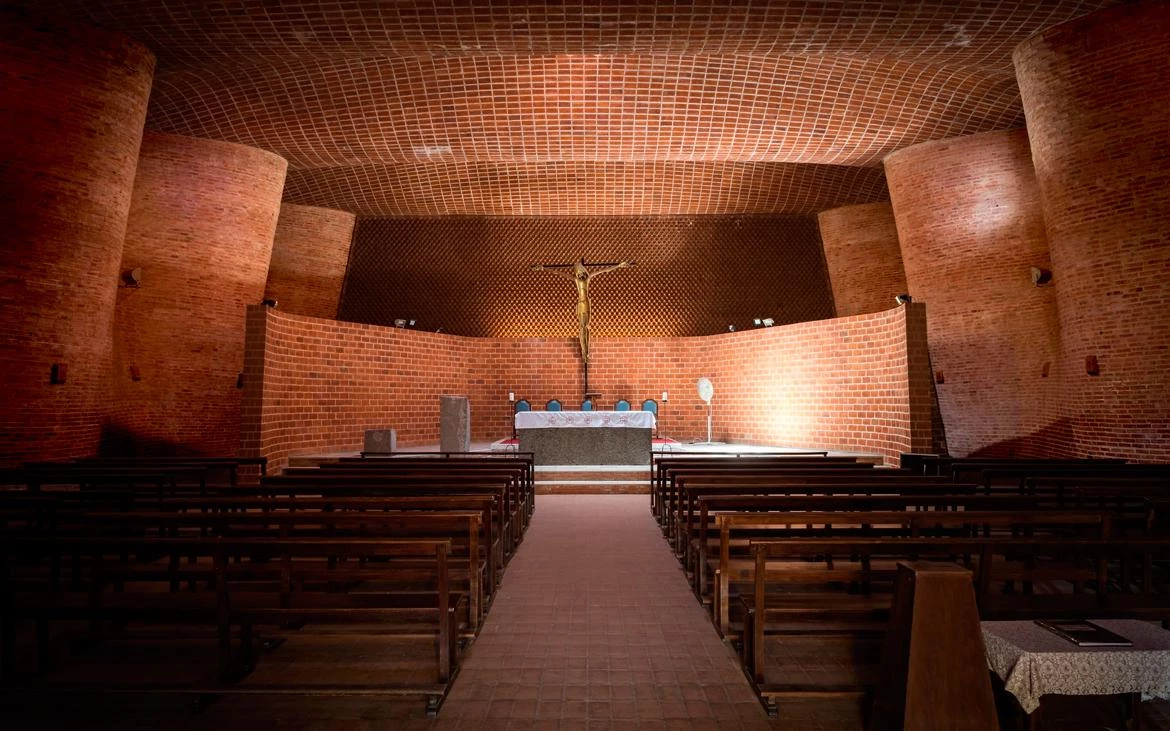Church of Atlántida by Eladio Dieste and Sítio Roberto Burle Marx, UNESCO’s World Heritage

The World Heritage Committee today added 13 cultural sites to UNESCO’s World Heritage List. These additions were made during the extended 44th session of the World Heritage Committee, which is examining nominations from both 2020 and 2021. The inscription of sites on UNESCO’s World Heritage List is scheduled to continue through 28 July.
Recently inscribed sites include:
Uruguay, The work of engineer Eladio Dieste: Church of Atlántida
The Church of Atlántida with its belfry and underground baptistery is located in Estación Atlántida, 45 km away from Montevideo. Inspired by Italian paleo-Christian and medieval religious architecture, the modernistic Church complex, inaugurated in 1960, represents a novel utilization of exposed and reinforced brick. Built on rectangular plan of one single hall, the church features distinctive undulating walls supporting a similarly undulating roof, composed of a sequence of reinforced brick Gaussian vaults developed by Eladio Dieste (1917-2000). The cylindrical bell-tower, built in openwork exposed brick masonry, rises from the ground to the right of the main church facade, while the underground baptistery is located on the left side of the parvis, accessible from a triangular prismatic entrance and illuminated via a central oculus. The Church provides an eminent example of the remarkable formal and spatial achievements of modern architecture in Latin America during the second part of the 20th century, embodying the search for social equality with a spare use of resources, meeting structural imperatives to great aesthetic effect.
Brazil, Sítio Roberto Burle Marx

Situated west of Rio de Janeiro, the site embodies a successful project developed over more than 40 years by landscape architect and artist Roberto Burle Marx (1909-1994) to create a “living work of art” and a “landscape laboratory” using native plants and drawing on Modernist ideas. Began in 1949, the garden features the key characteristics that came to define Burle Marx’s landscape gardens and influenced the development of modern gardens internationally. The garden is characterized by sinuous forms, exuberant mass planting, architectural plant arrangements, dramatic colour contrasts, use of tropical plants, and the incorporation of elements of traditional folk culture. By the end of the 1960s, the site housed the most representative collection of Brazilian plants, alongside other rare tropical species. In the site, 3,500 cultivated species of tropical and subtropical flora grow in harmony with the native vegetation of the region, notably mangrove swamp, restinga (a distinct type of coastal tropical and subtropical moist broadleaf forest) and the Atlantic Forest. Sítio Roberto Burle Marx exhibits an ecological conception of form as a process, including social collaboration which is the basis for environmental and cultural preservation. It is the first modern tropical garden to be inscribed on the World Heritage List.


